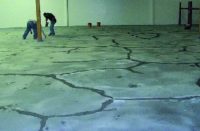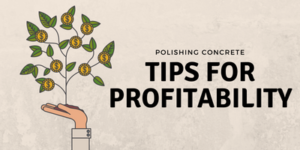Ever heard the saying, “It’s not the arrow, it’s the Indian?” When it comes to concrete overlay issues, I have found this old adage rings true 99 percent of the time. Yes, I know this is a pretty broad statement, and yes, I do work on the manufacturing side of the business, but on almost every problem job I have been involved with over the last 15 years, the facts and findings support this claim. So the question hanging out there remains: If it’s not the product, why so many problems? The answer might be deeper than you think.
Ever notice the broad range of opinions that exist regarding concrete overlays and how they work? Take color hardener, for example — not everyone uses the product, but most agree that it is good and provides excellent results. Why then with overlays does such a spectrum of opinion and emotion exist?
Manufacturers of concrete overlay systems tell us that if applied correctly, these materials are designed to withstand almost anything Mother Nature or man can throw at them. A certain segment of installers will tell you with no lack of emotion that all overlays stink, they don’t work. These people will eat thousands of dollars in concrete replacement when spending merely hundreds of dollars to overlay would solve the problem nicely. Then we have a third segment of the market, people who believe so strongly in the overlay market they build their entire businesses around this one product system and in many cases do quite well. Lastly, we have the largest segment, those who install overlays as just one part of their business, whether by choice or necessity.
I believe our love-hate relationship with overlays comes from the complexity of the products and their application. These are systems that require a fairly in-depth understanding of selling, preparation, mixing, application and maintenance. Unlike with other decorative systems, such as stains, small mistakes in the sale and installation of overlays can have large negative repercussions.
I do want to make the point that the number of legitimate complaints or overlay failures when compared to the total number of overlays applied each year is very small. As with anything in our society, we love to harp on the negative and tend to walk right over the millions of square feet of success that are literally right under our feet.
A bigger problem, maybe, is managing expectations. Across the board, the overlay industry has done a poor job in this regard. I have found that at all stages of the game, overlays are oversold. Manufacturers sell these systems with buzzwords like “easy to apply” and “solves all your concrete problems.” Advertising and marketing seem to oversimplify what are in reality complex projects. Installers expand on these statements, and before you know it, overlays are prescribed for any and all concrete issues, and anything short of 30 years of flawless performance is viewed as a failure.
We all need to do ourselves and the industry a favor and start managing and tempering expectations of where and when overlays can be used and what realistic life-span expectations are. A case in point is the life expectancy of exterior overlays, especially in freeze-thaw environments. Yes, they work, but even with perfect installation they have a life span. Identifying a realistic life span in advance manages expectations.
Keep in mind that there is a fine line between managing expectations and scaring clients away from using your services. Successfully managing your client’s expectations while still landing the job requires salesmanship and product knowledge, both of which take time and practice before one is proficient. Too often I see installers so eager for work that they make outrageous performance claims or just ignore the subject of life span altogether. That is a bad combination that too often ends up in callbacks and financial loss.
While the focus of this article is about managing expectations for better overlay success, I would be remiss if I did not mention the other reason behind so many overlay issues. Yes, you guessed it, surface preparation. I am not going to repeat or rehash what has been written on heavily, but I will leave you with this. Many years ago I read something from a Dayton Superior product source guide that has stuck with me ever since. It has to do with surface preparation and application of overlays in general, and it said something like this: More time and money should be spent on surface preparation than on the actual overlay itself.















